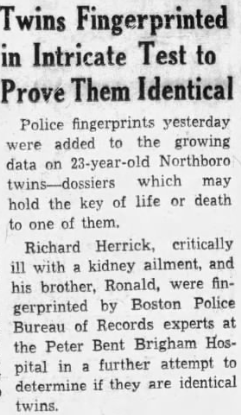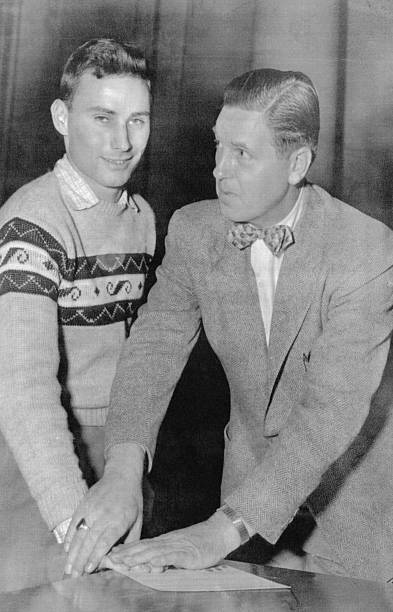Richard was transferred to the Peter Bent Brigham Hospital in Boston on October 26, 1954, and by this point, his condition had affected him greatly. "Uremia had affected his brain, making him a difficult patient, disoriented and combative. He cursed the medical staff and accused them of sexually assaulting him. He bit a nurse who was trying to change his sheets. He pulled out his intravenous lines and catheters. In short, he was a handful" (Murray, "The Fight for Life").
First Successful Organ Transplant
Breaking the Barrier of Organ Rejection
Preparation for Surgery
"Get out of here and go home!" - Richard Herrick, Kidney Recipient
"I am here, and I am going to stay." - Ronald Herrick, Kidney Donor

Nurse's Notes (Murray)
"Moreover, the surgical procedure needed to remove Ronald’s kidney contained undeniable risks—complications from general anesthesia, hemorrhage, accidental injury of a nearby vital organ, infection" (Murray). This list of risks proved to be an ethical dilemma for Dr. Murray. While it was somewhat routine for Dr. Murray to ask his patients to take some risk in order to benefit themselves, he was hesitant about asking a healthy person to take this big of a risk for a surgery with no predictable outcome.
"The media quoted doctors who said the experiment was not only doomed to failure but also unethical" (Murray, "The Fight for Life").
"..and that took about two years to really work it up and get the ethics and the morals and the acceptance of the community" (Nobel Prize).
Before the operation was approved, Murray wanted to test the brothers' immune systems' reactions to each others' organs. So, to do this, Dr. Murray and his team performed 17 genetic tests, including a skin graft and fingerprinting.

("Twins Fingerprinted")

"Richard Black fingerprinting Ronald Herrick"
(Getty Images)